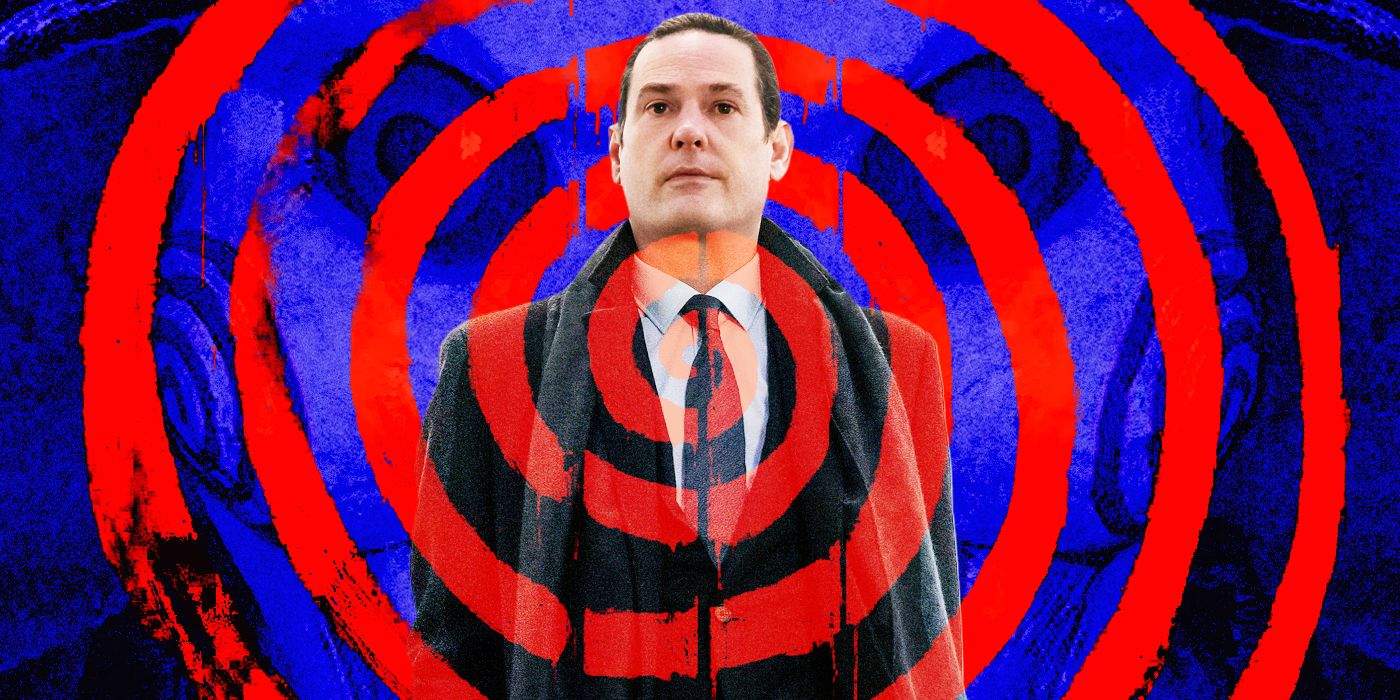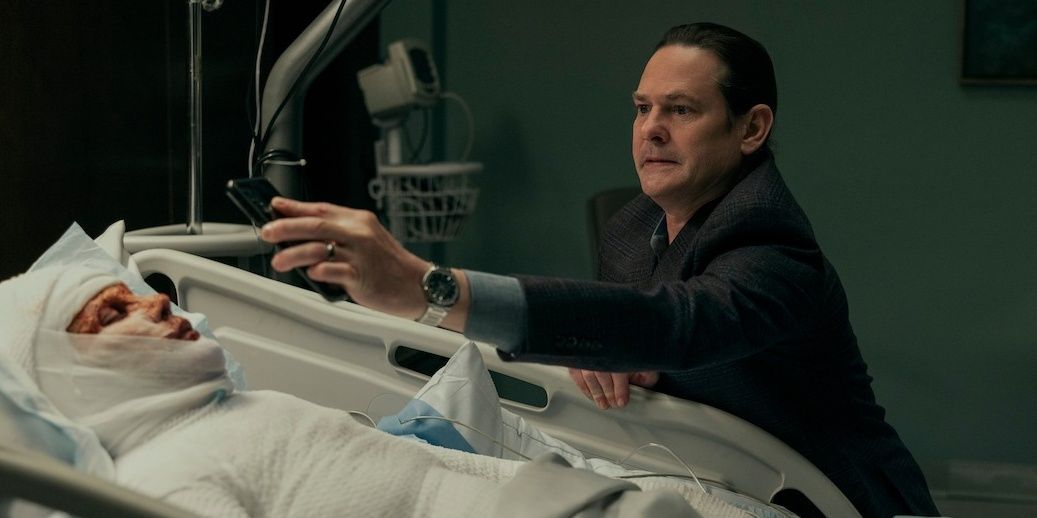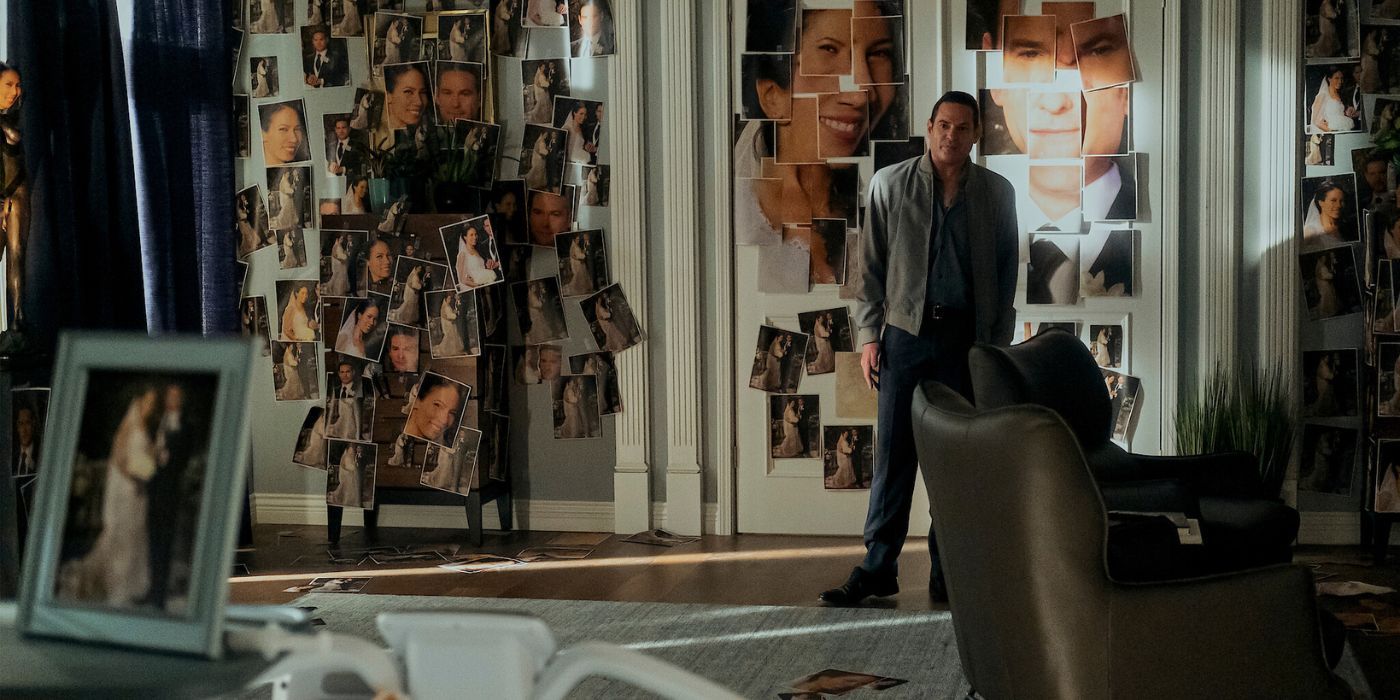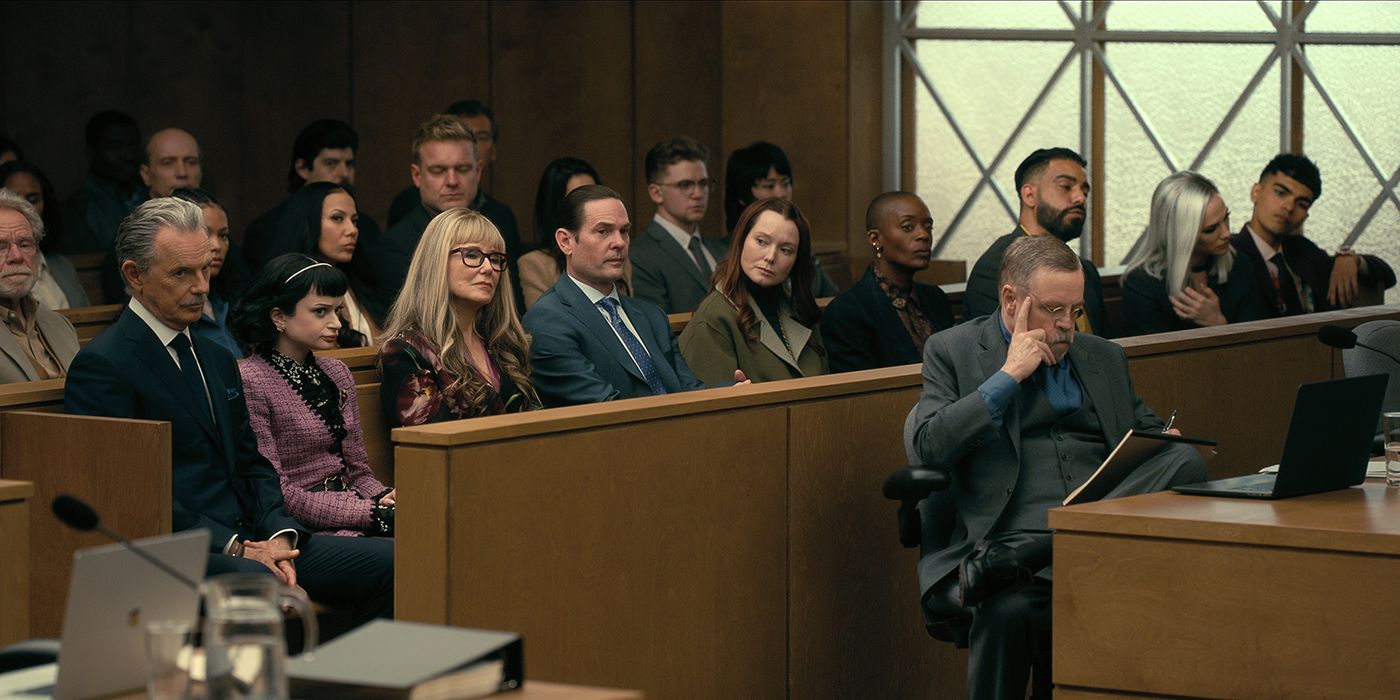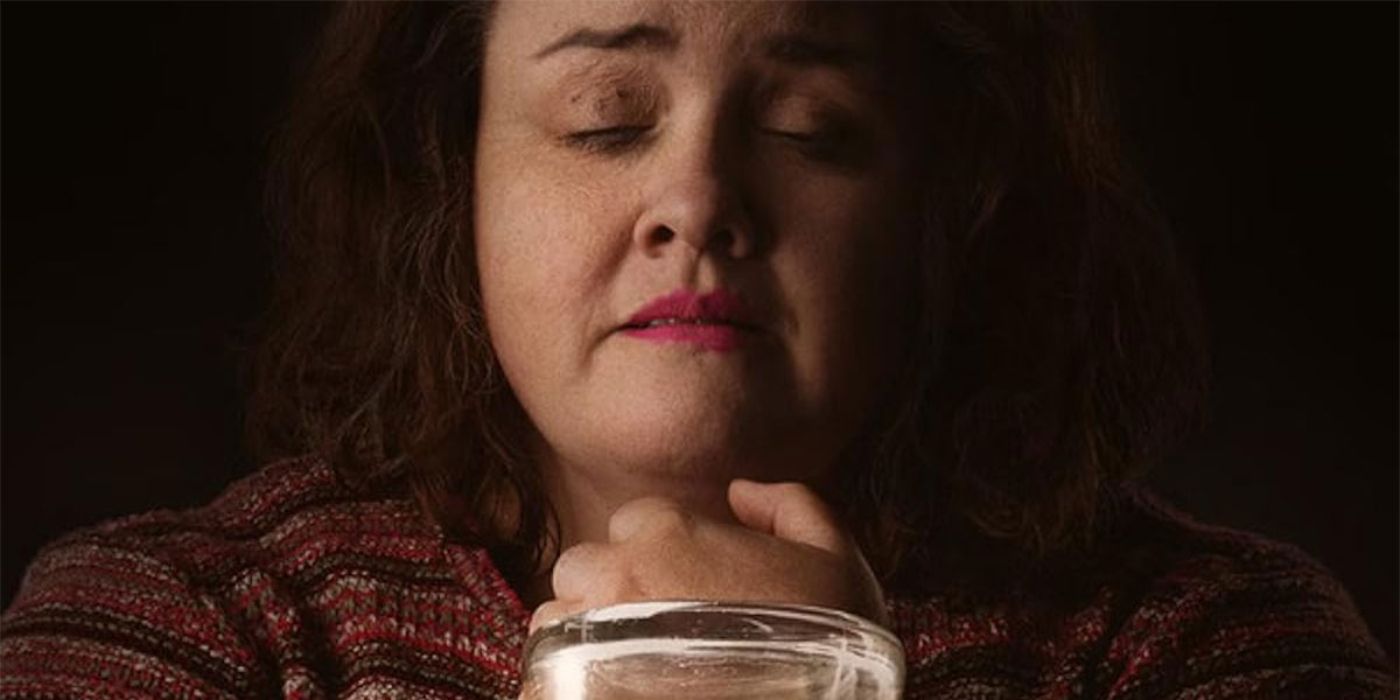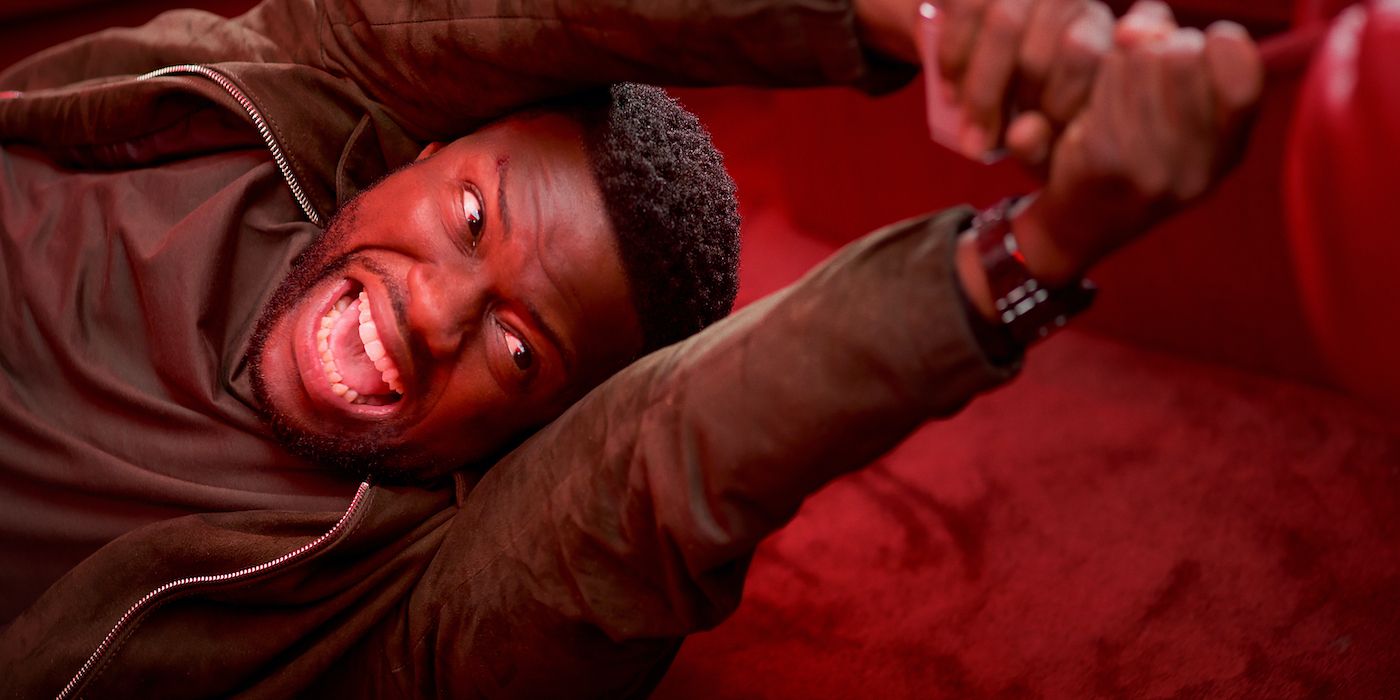Editor’s note: The below contains spoilers for The Fall of the House of Usher.
The Big Picture
- The Fall of the House of Usher and Saw V both feature deaths inspired by Edgar Allan Poe’s “The Pit and the Pendulum.”
- Freddie’s death in The Fall of the House of Usher is a fitting punishment for his abuse of his wife.
- The deaths in The Fall of the House of Usher symbolically reflect the unethical actions and flawed personalities of the Usher family.
The exceedingly addictive Netflix TV series The Fall of the House of Usher by horror genre disruptor Mike Flanagan features a variety of gnarly deaths of the titular Usher family, who one-by-one succumb to the curse that was agreed upon by the ruthlessly ambitious patriarch Roderick Usher (Bruce Greenwood) decades before. The series depicts the children dying in reverse order from youngest to oldest, ending with the death of the cowardly heir Frederick “Freddie” Usher. Freddie is played compellingly by Henry Thomas, one of several returning Flanagan-series regulars who make up the impressive cast. Whilst many of the deaths were imaginatively horrifying, with some being more ghoulish than others, one in particular expertly reimagines a death trap straight out of Saw V to bring about Frederick’s deserved demise.
‘The Fall of the House of Usher’ and ‘Saw V’ Are Linked by Their Pendulum Death Scenes
The work of famed horror writer and poet Edgar Allan Poe serves as a continuous inspiration throughout The Fall of the House of Usher, and it seems as though we can say the same for t. While none of the creators have confirmed the inspiration, one wouldn’t be blamed for thinking that the opening death of Saw V was taken directly from the pages of Poe. The short story that seemingly inspired both the death in Saw V and the death trap that defeats Freddie is the gothic horror story titled The Pit and the Pendulum. In it, the narrator is strapped to a board next to a deep pit, and as he lies facing upward, unable to move, he is tormented by a sharpened pendulum that swings closer and closer to his torso. Similarly, in Saw V, the character of Seth (Joris Jarsky) is chained to a table whilst a deadly pendulum advances towards his abdomen. However, in this twisted version, he has to put his hands into vices that will inevitably crush them, in an attempt to halt his execution.
In The Fall of the House of Usher, Freddie’s death is no less torturous. Tasked with overseeing the demolition of the Usher company laboratory that was responsible for a horrific mass death including that of his youngest sibling Prospero (Sauriyan Sapkota), he steps inside shortly before it is to be knocked down to find his wife’s engagement ring, and to urinate on the ground in a final grossly insulting gesture to his deceased brother. Unbeknownst to him, however, the drugs that he has been taking have paralyzing effects, resulting in him falling to the floor in a humiliating unzipped state, becoming unable to move or get up. The immortal character of Verna (Carla Gugino) ominously enters at this point, proceeding to explain to Freddie why she chose for him to die in this manner.
Once Verna has given the go-ahead for the building’s demolition via the use of a handheld radio and by assuming one of her tricks of false identity, Frederick lies on the ground in an incapacitated state, witnessing the moment that the wrecking ball smashes through the building. This causes a sharp part of the building to come loose, only to be caught by a cable, which dangles over him and swings back and forth mockingly. Eventually, this temporary pendulum swings within reach of him, cutting into his torso and ultimately ending his life.
How Did Frederick’s Death Perfectly Avenge His Misdeeds?
Much like Seth in Saw V, who killed his ex-girlfriend prior to his Jigsaw-inspired punishment, Frederick proves to be vilely abusive to his wife Morelle (Crystal Balint) during the series. After being caught in the horrific acidic tank accident at the condemned laboratory building, she lies in a terrible condition in a medical facility, completely defenseless. Then, after becoming obsessed with the idea that she had gone to the underground lab party to cheat on him, Freddie decides to have her brought home, covertly terminating her professional care visits in the meantime. His evil treatment of her reaches its crescendo when he uses pliers to extract her teeth after administering an immobilizing nightshade drug, which Verna states was the final push toward his precisely calculated style of execution (and why she poisons his cocaine with the same drug).
Overall, due to the injustice of Seth’s short prison sentence in Saw V, and Freddie’s abuse of his vulnerable wife, the delayed nature of their personalized death traps ensures that they are forced to reflect on their dire actions. As such, lying immobilized and in terror, Freddie can do nothing but listen to Verna’s damning monologue, who has the final say in how the Usher family dies and therefore has covertly been assessing his behavior to determine his method of death. As the shadowy outline of the wrecking ball stalks the perimeter of the building, foreshadowing Freddie’s downfall, he has to listen in petrified suspense to a summary of his crimes, acutely confronted by the consequences of his actions.
The way in which Freddie is killed, in particular, symbolically echoes these consequences, with his horrendous misuse of dentistry on Morelle being karmically returned with aplomb in the form of the sharpened piece of building that eventually severs him in half, and her prior forced drugging by nightshade being fittingly reproduced in his drug-induced paralysis. It all amounts to such a carefully engineered example of poetic retribution that even the location in which he had stated bitterly that she “Should have died,” is where he meets his final agonizing moments — the same patch of ground that Prospero had tragically died on, that he had so disrespectfully desecrated just moments before.
What Was the Symbolism Behind the Usher Family’s Deaths?
As poetically exemplified by Freddie’s final moments, the twisted Usher family receive their comeuppance in ways that brilliantly recall their unethical actions and flawed personalities – except, perhaps, for Prospero’s excessively gruesome acidic death. From Victorine’s (T’Nia Miller) obsessive death by self-administered surgery to Camille’s (Kate Siegel) ruthless hunt for scandal and riches being her ultimate undoing, the series astutely nails narratives concerning corrupt business practice, their inevitable consequences, and the inescapable march of fate, as carried out by the unyielding Verna. Overall, Frederick Usher in The Fall of the House of Usher and Seth in Saw V satisfyingly receive their dues in Edgar Allan Poe-inspired traps that perfectly combine twisted ingenuity, and above all, destiny.

